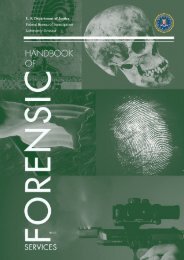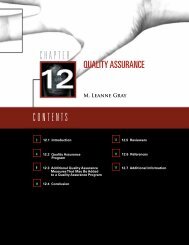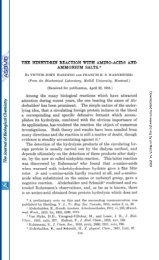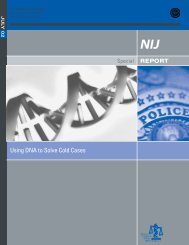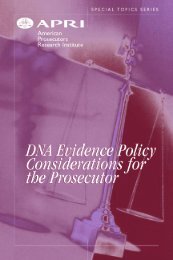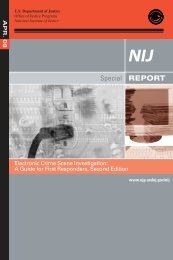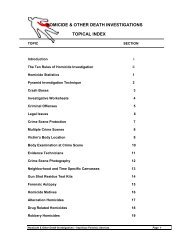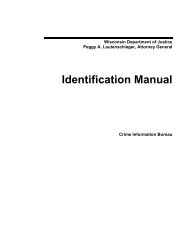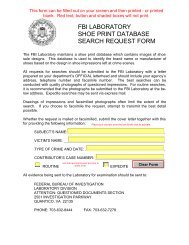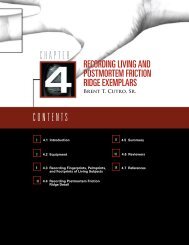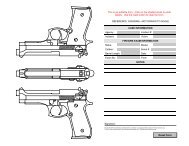Mass Fatality Incidents: A Guide for Forensic Identification
Mass Fatality Incidents: A Guide for Forensic Identification
Mass Fatality Incidents: A Guide for Forensic Identification
- No tags were found...
You also want an ePaper? Increase the reach of your titles
YUMPU automatically turns print PDFs into web optimized ePapers that Google loves.
MASS FATALITY INCIDENTS: A GUIDE FOR HUMAN FORENSIC IDENTIFICATION3. Conduct postincident debriefings.4. Consult regularly with the otheragencies involved.5. Recognize the ef<strong>for</strong>ts of the agenciesand individuals who respondedto the incident and processed thescene.B. Reduce staff in a coordinated fashionbased on circumstances and the durationof the investigation.C. Prepare a <strong>for</strong>mal after-action report citingoptimal practices and lessonslearned.Summary. Planning from the beginning<strong>for</strong> the demobilization of the responseef<strong>for</strong>t can facilitate the smooth transitionof jurisdictional authority.VI. Stress ManagementPrinciple. Stress can negatively affect theresponders, their coworkers, and the overallefficiency of incident operation. The responseto a mass facility incident shouldinclude systems to deal with stress, whetherpsychological, physiological, acute, or longterm.Procedure. The appropriate administratoris expected to—A. Establish a plan <strong>for</strong> recognizing andmanaging stress using personneltrained in mass fatality stressmanagement.B. Consider briefing response personnelon stress issues be<strong>for</strong>e theirassignment.C. Provide peer and professional supportto observe and treat personnel whomay be experiencing stress.D. Organize the response to preventstress and accommodate individualbehavior.E. Plan postincident stress debriefings <strong>for</strong>responders and volunteers.Summary. The psychological impact onmass fatality responders is real and needsto be addressed be<strong>for</strong>e, during, and afterthe incident.VII. VolunteersPrinciple. Volunteers may appear at thescene of a mass fatality incident regardlessof the need <strong>for</strong> their services. Carefullyconsider choosing and using volunteers.Volunteers are expected to be used accordingto their knowledge, skills, and abilitiesas well as within liability limitations.Procedure. The appropriate administratoris expected to—A. Determine the need <strong>for</strong> volunteers.B. Maintain a roster of volunteers’ nameswith updated contact in<strong>for</strong>mation.C. Establish criteria <strong>for</strong> verifying the credentialsand qualifications of volunteers.Be wary of volunteers withulterior motives.D. Develop a procedure to match volunteerswith operational needs accordingto their knowledge, skills, and abilities.E. Ensure that volunteers are supervisedby an appropriate official.Summary. Although volunteers may behelpful in some situations, cautiouslyreview their credentials and qualifications<strong>for</strong> the duties and functions required.VIII. Language, Cultural, andReligious ConsiderationsPrinciple. Language and cultural differencesmay complicate all parts of themass fatality response and should beconsidered in the overall plan.51




